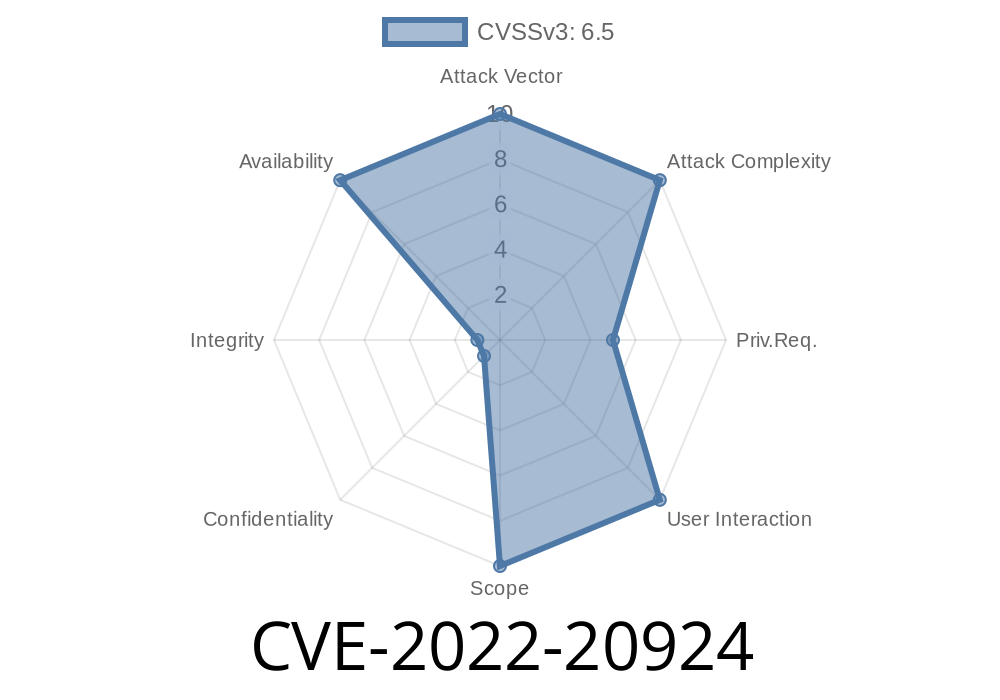In this post, we will take an in-depth look at a recently disclosed vulnerability in the Simple Network Management Protocol (SNMP) feature of Cisco Adaptive Security Appliance (ASA) Software and Cisco Firepower Threat Defense (FTD) Software. This vulnerability, identified as CVE-2022-20924, could potentially allow an authenticated, remote attacker to cause a denial of service (DoS) condition on the affected device, compromising the network's stability and performance.
Official References and Resources
- Cisco Security Advisory
- National Vulnerability Database (NVD) Entry
Vulnerability Details
The root cause of this vulnerability is insufficient input validation in the SNMP feature's code implementation on both Cisco ASA and FTD Software platforms. An attacker could exploit this vulnerability by sending a carefully crafted SNMP request message to the targeted device. If successful, the exploit could force the affected device to reload, resulting in a DoS condition and disruption of network services.
Below is a simplified code snippet highlighting the input validation issue
def handle_snmp_request(request):
# Assume request is a dictionary with various data fields
if "data" in request and data_is_valid(request["data"]):
process_request(request)
else:
# Insufficient input validation can be exploited by an attacker
raise ValueError("Invalid data")
Considering the widespread use of Cisco ASA and FTD devices as security appliances, this vulnerability could have a significant impact on organizations if left unaddressed.
Proof of Concept (PoC) Exploit
While the specifics of the actual exploit have not been publicly disclosed to prevent misuse, the exploitation process generally involves the following steps:
The attacker crafts a malicious SNMP request targeting the vulnerable ASA or FTD device.
2. The attacker sends the crafted SNMP request to the device, bypassing the insufficient input validation mechanism.
The device encounters unexpected input, causing it to crash and subsequently reload.
5. The DoS condition is established as the device reboots, rendering the network security services unavailable temporarily.
Mitigation and Solutions
Cisco has advised that there are no known workarounds for this vulnerability. However, they have released software updates addressing the vulnerability for affected products. Organizations using Cisco ASA and FTD Software should take immediate action to apply the recommended updates.
In addition to applying patches, administrators can also implement best practices to reduce the attack surface, including:
Restricting SNMP access to trusted management IP addresses.
- Using strong SNMP community strings (passwords) and minimizing the use of SNMP version 2c or earlier, which lack cryptographic security features.
It is always important to stay informed and take proactive measures to protect your critical network infrastructure from vulnerabilities and exploits. Stay vigilant and keep your software updated to ensure the safety and reliability of your systems.
Timeline
Published on: 11/15/2022 21:15:00 UTC
Last modified on: 11/22/2022 14:36:00 UTC
